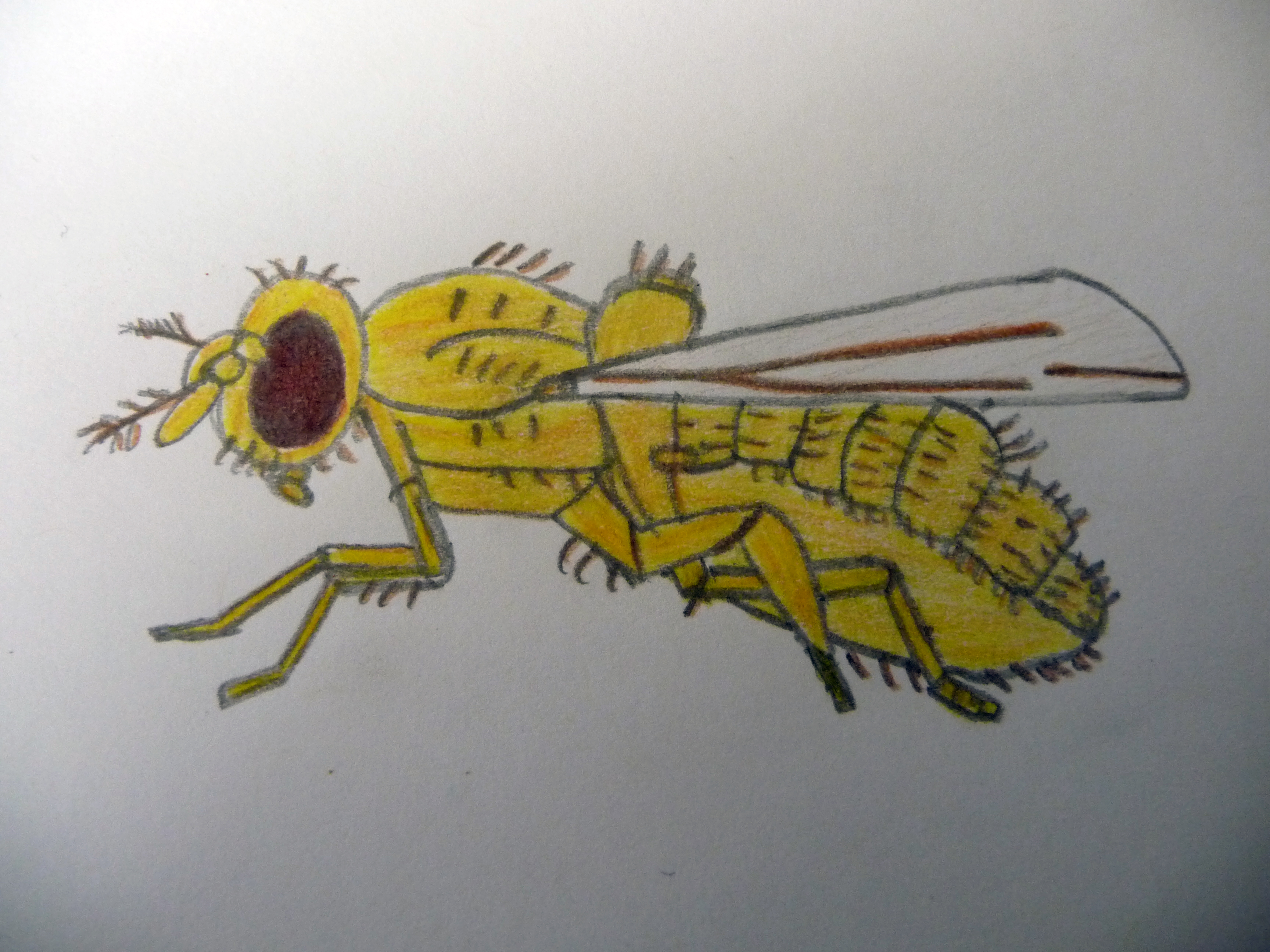Gastrulation
Gastrulation is when the 3 germ layers (mesoderm, endoderm and ectoderm) form approximately 3 hours after fertilization. The first stage of gastrulation is when the future mesoderm invaginates to form a furrow along the midline of the ventral region and a tube of mesoderm. This event is then followed by the migration of mesoderm cells to under the ectoderm. These mesoderm cells mainly give rise to muscle and connective tissues. The ectoderm cells in the ventral portion give rise to neuroblasts in the area between the mesoderm and outer ectoderm, which then go on to form the nervous system. The outer ectoderm forms the epidermis. The midgut is formed by the invagination of the anterior and posterior regions of future endoderm; which fuse together, whereas the foregut and hindguts originate from the ectoderm.
Zygotic genes
Zygotic genes are expressed in the embryo. There are 4 main zygotic genes, whose actions occur on the antero-posterior axis: gap genes, pair rule genes, segment polarity genes and homeotic or selector genes.
Gap genes
Gap genes are expressed due to the varying Bicoid and maternal Hunchback protein concentrations along the antero-posterior axis of the embryo. An example of a gap gene is hunchback, which is activated by Bicoid protein in the anterior region (where the highest levels of Bicoid are found). Hunchback switches on other gap genes, such as Krüppel and knirps. However, high levels of Hunchback protein lead to the inhibition of Krüppel, also having the same effect on knirps. In Drosophila with a mutation in the knirps gene the segments are missing.
Pair rule genes
Most, but not all pair rule genes are activated by gap genes and are expressed just before the cellularization of the embryo occurs. They are expressed in the 14 parasegments of Drosophila. Specific pair rule genes are expressed in particular parasegments. An example of a pair-rule gene is paired.
Segment polarity genes
The parasegments are patterned by the segment polarity genes, for example the engrailed and wingless gene. Engrailed is one of the first segment polarity genes to be activated by the pair rule genes. Its expression is seen in the anterior end of each of the 14 parasegments. The cells that express engrailed also express Hedgehog protein, which maintains the expression of wingless. Wingless inhibits denticle formation in the anterior region and causes the production of smooth cuticle.
Homeotic genes
Homeotic genes specify segment identity. There are 2 homeotic gene clusters, the Antennapedia complex, which determines parasegments 1-4 and the bithorax complex, which specifies parasegments 5-14. The Antennapedia complex has 5 homeobox genes and the bithorax complex has just 3.

